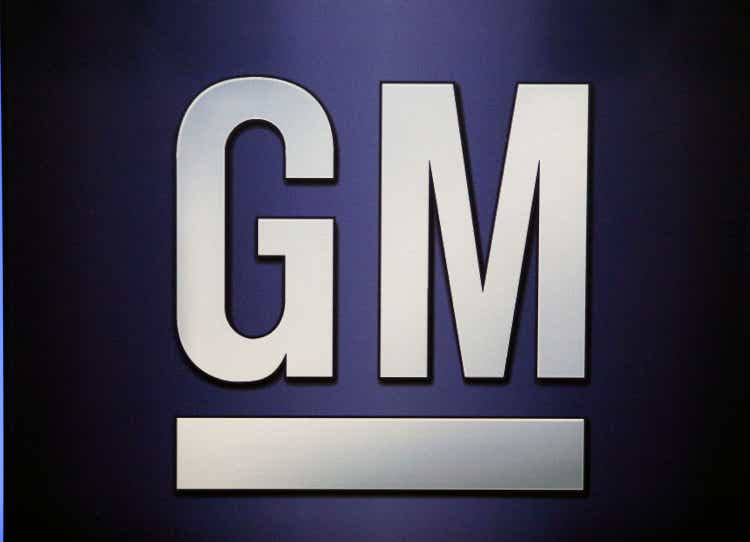Bill Pugliano/Getty Images News
General Motors (NYSE:GM) stock hit a 52-week low last week amid concerns about the potential impact of ongoing supply chain problems and rising costs on both production and demand. However, the company remains committed to expanding its electric vehicle operations, part of the argument that drove shares to a 52-week high less than six months ago.
Has the stock become a buy based on its sharp decline and the lingering EV upside?
EV Hopes; Supply Chain, Inflation Fears
Trading of GM shares has largely echoed the broader market over the past few months, albeit on a more amplified level. Both GM and rival Ford (F) have fallen 35% year-to-date, with the S&P 500 index sliding 13%.
Meanwhile, shares of peers Toyota (TM) and Honda (HMC) have declined 10% and 12%, respectively. At the same time, Stellantis (STLA) shares have tumbled 21%.
GM shares reached a 52-week low on May 24 of $34.31, a drop of nearly 50% from their high of $67.21 on Jan. 5. The stock has been trending higher since hitting the low and sat at $38.91 in midday action on Tuesday.
Shares of the automaking giant reached that 52-week high thanks to hope surrounding its electric vehicle operations. The company had made a dramatic push into the EV sector, hoping to displace Tesla (TSLA) as the industry heavyweight, and investors had given GM significant credit for its progress in this area.
Just as an example of the firm’s continued push into the EV sector, Tuesday saw GM’s all-electric Hummer receive a rave review from Barron’s. The news outlet pointed to the vehicle as its favorite among 15 EVs tested, beating out offerings from TSLA, F and Lucid (LCID).
Meanwhile, in addition to its own expanding line of electric vehicles, the automaker also recently announced a partnership with Honda (HMC) to co-develop affordable EVs.
GM has also established a sizeable footprint in the autonomous driving market through its majority stake in Cruise, which has been developing self-driving EVs and a driverless taxi service. In March, GM announced it was buying Softbank Vision Fund 1’s stake in Cruise for $2.1B along with making an additional $1.35B investment. Other Cruise investors include Microsoft and Walmart.
While EV excitement helped drive the stock higher, worries about the supply chain and inflation fueled its retreat for most of 2022. At the same time, the market aggressively repriced EV stocks, undermining some of the bullish arguments about GM’s valuation.
On the supply chain problems that have vexed the sector, the company reported a 20% drop in U.S. vehicle sales for Q1, a decline that was exacerbated by events such as Russia’s invasion of Ukraine. Despite the drop, GM reaffirmed its 2022 guidance and asserted that the supply chain it is establishing for its EV business will give it a competitive advantage. GM’s earnings were released on April 26.
Is GM a Buy?
Wall Street analysts, on average, rate GM a Buy. Of the 25 analysts tracked by Seeking Alpha, 20 had a Buy or Strong Buy on the stock, while four rated it a Hold and one a Strong Sell. SA authors, on the other hand, have rated the stock a Hold, on average.
Seeking Alpha’s Quant Ratings also point to a buying opportunity as of Friday afternoon. GM received an A+ for profitability, a B+ for valuation, a B- for revisions, a C for momentum and a C- for growth.
In a note released on May 11, Wells Fargo analysts downgraded GM and Ford to Underweight ratings, the equivalent to a Sell recommendation. The move stemmed from concerns about rising costs and increasingly stringent U.S. regulatory standards.
Morgan Stanley on May 13 reiterated their Equal-weight rating for GM. In voicing a neutral stance, the firm cited in part lower volume, higher costs, and decreased valuations for GM China and Cruise as negative drivers.
Positive factors cited by Morgan Stanley included increased valuation for GM’s legacy internal combustion engine, or ICE, business, which they “believe will have a long and ‘fatter’ de-adoption curve given supply chain constraints and inflation in the EV supply complex.”
For a more in-depth look at GM, check out SA contributor Jonathan Weber’s “Ford Vs. General Motors Stock: Which Is the Better Buy?” and SA contributor The Value Pendulum’s “Is General Motors Stock a Buy, Sell or Hold After Recent Earnings?”

